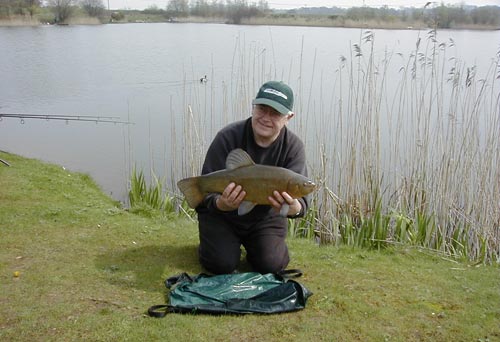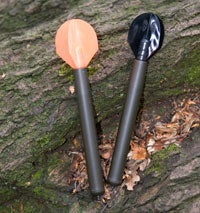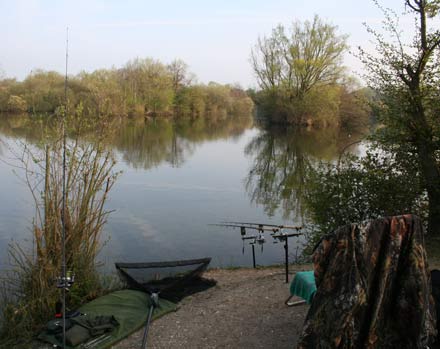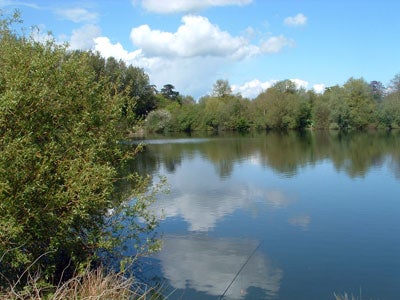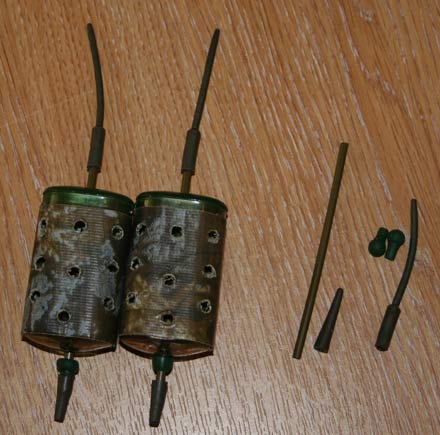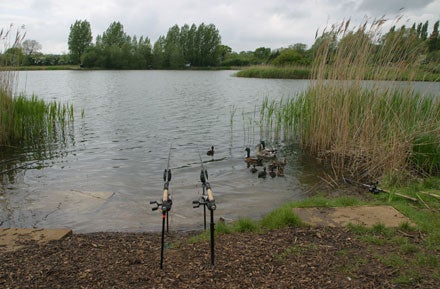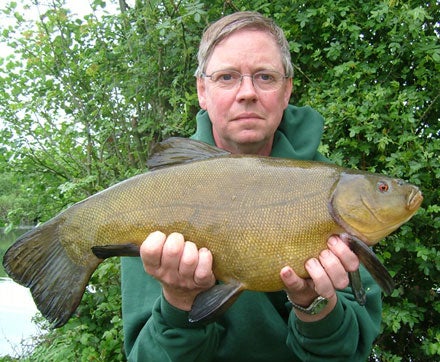| THE TENCHFISHERS | |
|
Pit Fishing for Tench – Part 1, Getting StartedPits Versus Traditional VenuesAlthough traditionally estate lakes and slow-running canals and rivers come to mind for tench fishing, these days you cannot afford to ignore the gravel pits. These venues are numerous and do tend to hold the bigger fish. In fact many fish over ten pounds come from these waters as indeed does the current record of 15lb 3oz that was captured in 2001.
If most of your tenching has been done on traditional venues then the gravel pits may at first seem to be quite daunting. Many at first glance appear featureless (although in reality this is often a false impression) and quite vast in comparison. In the Home Counties some old pits are up to 300 acres in size and more like inland seas than fishing venues. Hence initial impressions can be quite discouraging. Selecting Your WaterI would suggest that a venue of up to 25 acres is manageable for the newcomer. You can generally walk round these in an hour. Try and gather as much intelligence as you can by talking to other anglers about methods and successful baits. I will always map my water. You can scan and enlarge the map from your permit book and use a clear acetate to overlay it to mark key information about the swims. Remember all the watercraft that you have learnt on the canals and small lakes apply! You will still have a sixth sense for ‘tenchy’ looking spots and you should record these as priorities.
The use of a marker float will tell you more about the underwater geography and running a lead through will give you an idea of whether you are on gravel, silt or a big weedbed. When it comes to mapping the venue I like to break it down into a number of sections, which can be explored as you wish. I would plan to get to know a couple of areas well and then start fishing! If these do not produce then you can restart the process elsewhere. I would recommend a Hummingbird SmartCast to help you quickly learn about swim features. The older models can be bought on eBay for about £ 60, the large screen models are best. SmartCasts have a range of around 40 yards, more than adequate for most tench fishing.
Productive SpotsFortunately most pits have significant ‘drop-offs’ just out from the margins. These are always great areas for tench and are first on my list to place a bait on. Modern tenching does rely a lot on bolt rig feeders but such swims are great for float fishing. Other spots I look for are clear gravel spots which have a fair amount of weed surrounding them. Tench and weed are synonymous. You may need to take a little time to find these spots but it is worthwhile. Just remove your hooklength and use your feeder to ‘plumb’ these areas. Leads always give the impression of less weed and you may rig up and find it pretty impossible to fish. Peninsulas on pits command a lot of water and often have intersecting channels and nearby islands, these are quite often hot swims but always popular! Personally I don’t rake pit swims, preferring to find the tench in their favoured habitat without disturbing it. However, top specimen anglers like Terry Lampard and Tim Norman did very well on Wraysbury 1 by raking out marginal swims, so never say never!Accuracy CountsIt is much easier to fish accurately with a float at short range as you have lots of visual references. With a feeder you do not and you have to create your own references. Direction of cast can be lined up on a far bank feature, you may need one for daylight and one for night time.
Reels should be clipped up to ensure a consistent length of cast and the line marked with ‘high vis’ braid or pole elastic. If you are spodding run out a feeder rod line to the line clip and then do the same with the spod rod until they are matched up. There is no point feeding in one area and fishing in another. Pit MethodsWell I have to say for specimen tenching the in-line feeder probably rules supreme. Fished with 2 or 2.5oz of lead they do make an effective bolt rig. You will be using two or three rods and alarms for this style of fishing. This method suits clear spots well and can in those conditions be fished with short combi hooklengths which are very efficient hookers.
However, feeders can be a disadvantage if it is very weedy, effectively forming a weed anchor! I would then swop to a running lead (Korda System) and a mesh pva bag of maggots. This is a better tactic and prevents a feeder picking up kilos of Canadian pond weed. I would also use a helicopter hook link arrangement as opposed to a shorter inline link. Fuss free float fishing can be achieved by using Locslide floats that automatically lock off at the bottom depth. These need to be fished on a tight line and you need to overcast your baited spot to allow for tightening up. They offer quite long range fishing in the bigger sizes. For the purist a big crystal waggler is a great pit float. As you will be fishing some considerable depths a 15 foot float rod is an advantage. Method feeders do not really get a big enough useage although on one venue I fished they out-fished standard feeders by a wide margin. Drennan and Korda make good 27g weighted versions which are ideal. You can fish these with ordinary tench rods if you do not overload the cage with feed. Even the mini Fox versions can hold a good bit of food and are ideal for light rods. Remember don’t get ‘rangeitis’, many of those tench are a few rod lengths out! LocationThe critical word in pit fishing! You could be a long way from the fish so I would not advise bivvying up on a new water and encumbering yourself with all the long stay kit that discourages you being mobile. I would suggest day sessions until you are really on the tench then you can bivvy up and hopefully get that big hit. If no action, always, always try a new swim. In more cases than not it will put fish on the bank for you. I am currently fishing a 100 acre venue and rarely stay overnight as the fish stocks are very nomadic. Better to get a decent night’s kip in a decent bed and pick a new area at dawn the next day when you are fully refreshed.Make sure you are at your chosen venue before first light and take a look for signs of fish activity such as bubbling or rolling. This is the best time of day to see your target fish. So don’t be in too much of a hurry to set up! If you are camping make sure you set that alarm for 3.45am and take a good squiz at the lake. Don’t stay in bed like the carp boys! Pit TackleThe float rod that you have used on the estate lake or canal is fine for margin fishing with a float set up. Most tenchers will use a 1.75TC leger rod on a pit which gives a flexible range of options in both casting range and weight. The Harrison Chimera 12 foot Specialist is a typical top end rod but there are now many options at half that price. Shimano Baitrunners in 500/600 sizes are an ideal companion loaded with 8lb and 10lb mainlines. Okuma do some great budget reels too.
For float fishing a suitable match reel is fine and I always use Maxima 6lb as it sinks like a stone when fishing a bottom end float like a waggler and helps minimise drift. A selection of feeders is essential and you will probably end up making your own in-line maggot feeders as there are not many suitable ones on the market. Hooks from size 16 up to size 8 will suffice. If you intend night fishing then a set of alarms will be necessary and there is a massive choice. The Delkim is probably the top end choice but much more reasonably priced models such as Fox MX are a good choice too. You might require a spod rod and reel for baiting at range but remember a lot of tench can be caught in the margins on these venues. A marker rod set up or a Smartcast is pretty essential though. If you intend staying out overnight then you are going to need all the long stay kit too. My advice is to get to the venue at dawn and fish until dusk. The amount of tench I have caught in the dark hours does not really justify staying out overnight unless travel reasons dictate this. Many pits involve long walks so you really do need to think about how much gear you are carrying. My day kit is one rucksack (Armo 60 litre), 3 rods/reels in an Aqua quiver, plus a Fox Everlevel chair. Leave the rod pods at home, (use Chris Brown’s excellent bars/ sticks) and cut everything right back. You will rarely park the car near your swim!
BaitsIf there are no nuisance species present I would go for red maggots. You can always switch to Enterprise artificials if you are being hook stripped. I am not a big fan of boilies for tench but of course they do catch their fair share on the carp venues that contain big tench. I prefer 10ml baits with two on a hair rig. Lobworm is massively underrated too if you do not have a big population of small perch. But maggots have always been the first choice along with casters.Pit Feeding TimesIt is dangerous to generalise in angling but I would say that 7am to 2pm is tench time! Of course you should be there earlier to get location clues but I have not found first light to be that busy.Time to sort you kit out and get a brew on before zero hour!Getting HelpYou should visit our website at www.tenchfishers.com for some general help. If you join us you will be in the company of around 250 keen tenchers who will be able to give specific help on your chosen venue whether personally or via our members-only forum TenchTalk.Choosing A VenueI would say order yourself a CEMEX guide book as they offer lots of superb tench venues from easy, moderately difficult, to out and out specimen venues. There are also a number of suggestions on our website. |











